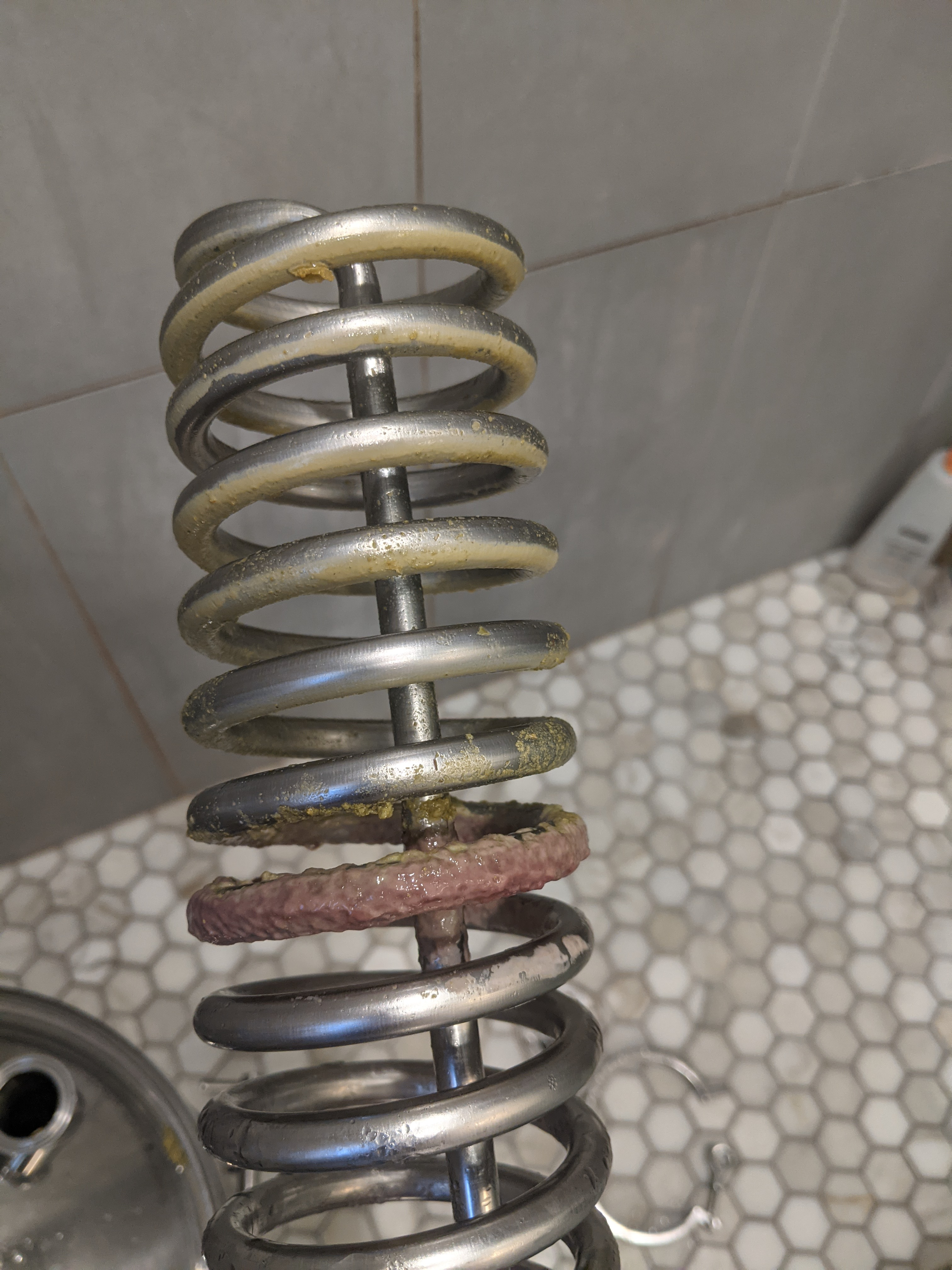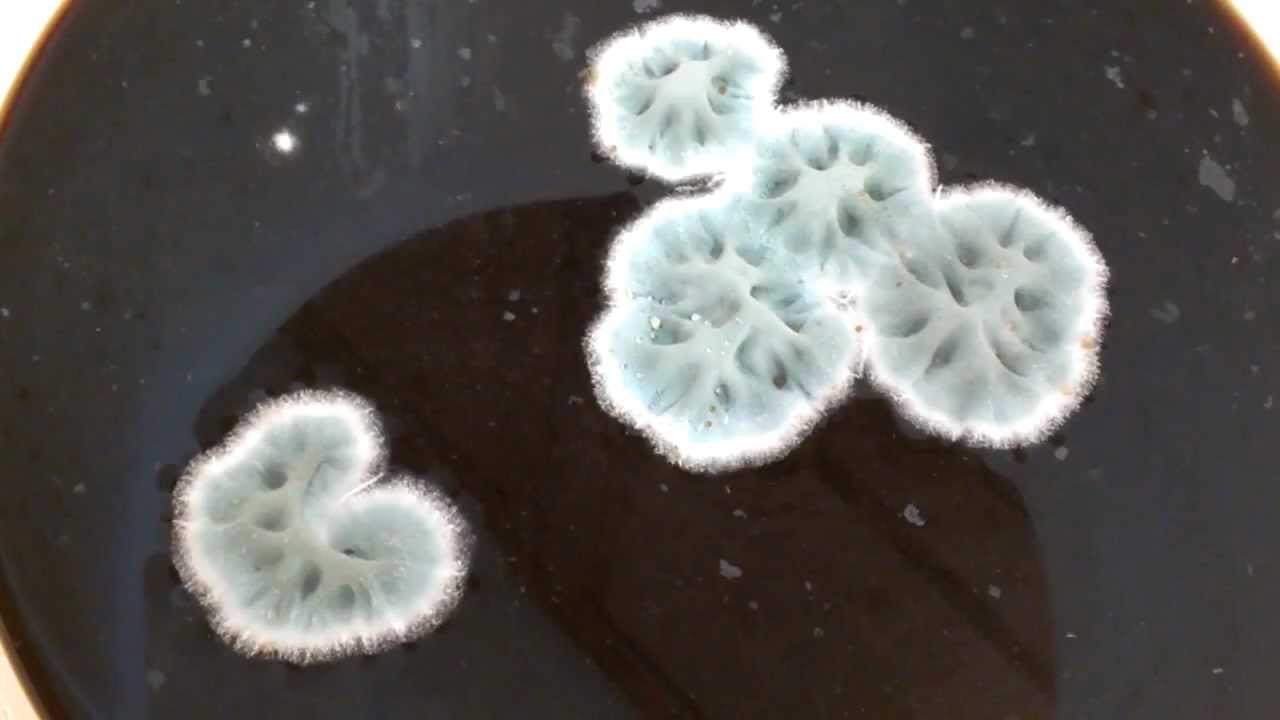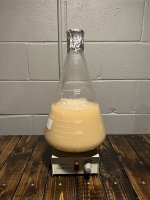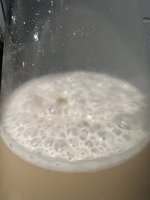So about two weeks ago i racked this braggot into a carboy, and at that time there was no sign of a pellicle, and it tasted quite nice. The recipe is basically 50% honey, 30% 2-row, 20% rye, and some orange peel, and a small amount of centennial and cascade hops. Oh and there’s a little caramel 60L in there.
Anyway, I just went into the brew closet and noticed quite a large white film over top that I’m quite certain is a pellicle. When I moved it to the counter top it disturbed it and some of it sank down a little, so the picture doesn’t really do it any justice.
I had a taste and it’s basically the same as last time I tasted it. What i’m wondering now is if I should just keg this now (which would mean having to drink / give away in growlers a couple gallons of beer today to free up a keg). Or should I throw it in the back of the closet for a year and see what happens - maybe get a cool funky sour braggot. it’s a tough call.
Oh also, it was in a closet with three carboys of Flanders Red fermenting away, and I noticed that the plastic bung on this carboy wasn’t gripping the glass, so it was a little loose. My guess is that this is from the brett (and whatever else is in the Roselare blend for the Reds) rather than being wild yeast from the honey, and the oxygen that would have got in explains the quick pellicle growth.
So what would you do? Keg it right away and enjoy a definitely tasty braggot for christmas? Or leave it for a year, maybe throw some oak in it even, and next christmas potentially have a funky sour braggot? could even add some dextrose to enhance the funk?
View attachment 711012



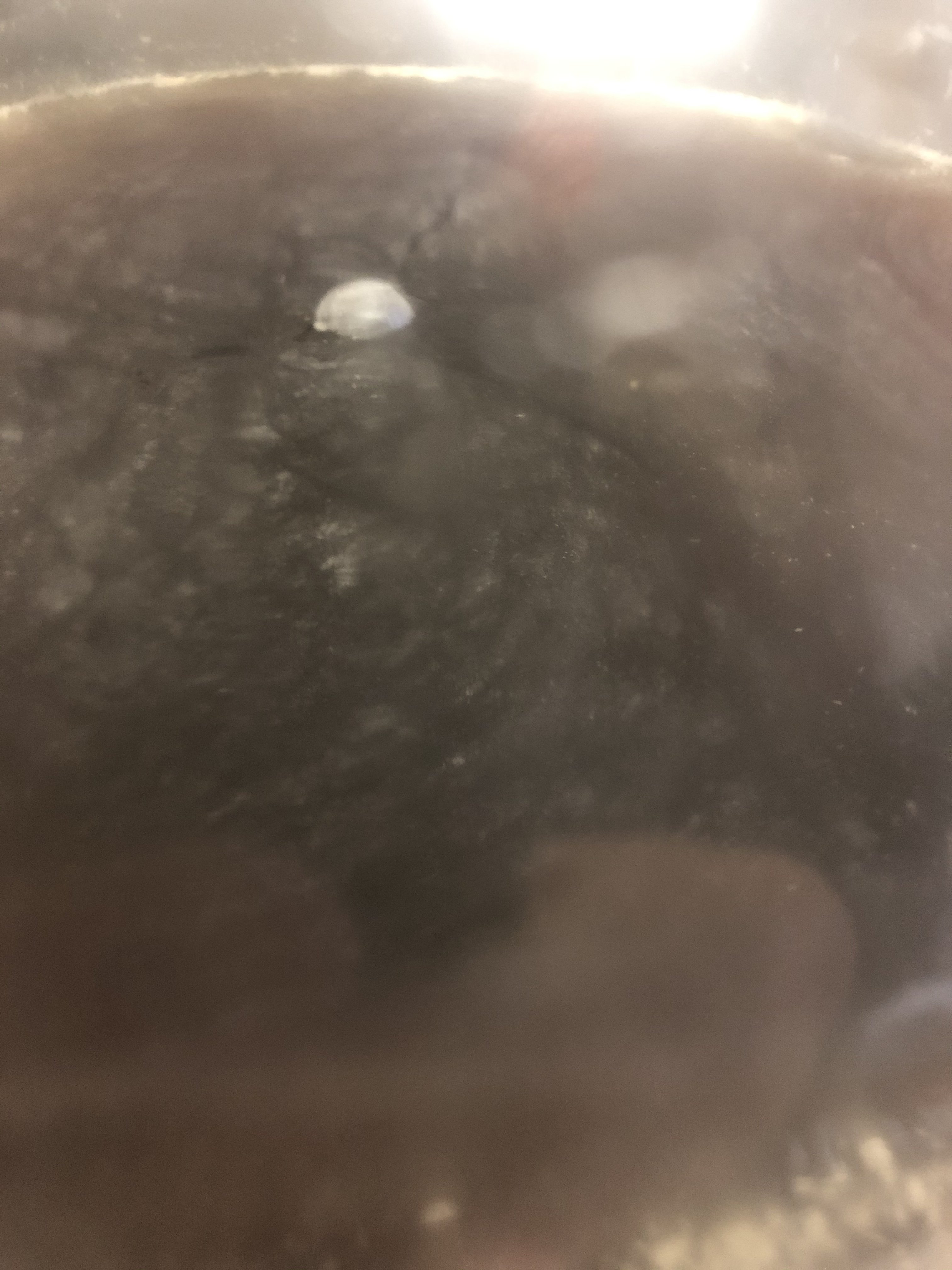























![Craft A Brew - Safale S-04 Dry Yeast - Fermentis - English Ale Dry Yeast - For English and American Ales and Hard Apple Ciders - Ingredients for Home Brewing - Beer Making Supplies - [1 Pack]](https://m.media-amazon.com/images/I/41fVGNh6JfL._SL500_.jpg)
































